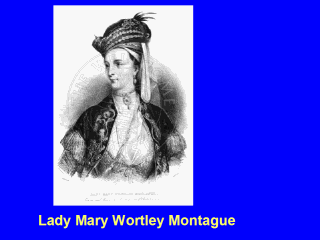 |
The practice of
variolation, inoculation into the skin of dried secretions from a smallpox
bleb, was invented in China about 1000 years ago and spread along the silk
route, reaching Asia Minor in the 17th century. Lady Mary Wortley Montague
wife of the British ambassador to Constantinople, described the practice in
a letter dated April 1, 1717, and imported the idea to England when she came
home. By the time Jenner was a child, variolation had become popular among
educated English families as a way to provide some protection against
smallpox.
Jenner knew the popular belief in Gloucestershire that people who had
been infected with cowpox, a mild disease acquired from cattle, did not get
smallpox. He reasoned that since smallpox in mild form was transmitted by
variolation, it might be possible similarly to transmit cowpox. A smallpox
outbreak in 1792 gave him an opportunity to confirm this notion. In 1796 he
began a courageous and unprecedented experiment – one that would now be
unethical, but that has had incalculable benefit for humankind. He
inoculated a boy, James Phipps, with secretions from a cowpox lesion. In
succeeding months until the summer of 1798 he inoculated others, most of
them children, to a total of 23. All survived unharmed, and none got
smallpox.
|
